Have you ever come across the term fiber patch cord and wondered, what is fiber patch cord all about? These small cables might seem simple, but they’re the unsung heroes of modern networks, connecting devices to keep data flowing smoothly. Whether you’re setting up a home Wi-Fi system, managing an office network, or working in a massive data center, knowing what is fiber patch cord can help you make the best choices for fast, reliable connectivity. In this beginner-friendly guide, we’ll explore fiber patch cords from every angle—starting with their types, diving into their uses, and covering costs, benefits, and more. We’ll keep it simple and easy to follow, so you can see why these cables are so essential in today’s tech-driven world. With high-quality options from CommMesh, let’s unravel the mystery of fiber patch cord uses and discover how they can work for you!
What Is a Fiber Patch Cord and How Does It Function?
Defining a Fiber Patch Cord
So, what is fiber patch cord exactly? A fiber patch cord—also known as a fiber optic patch cable—is a short, flexible cable, typically 1 to 10 meters long, used to connect two devices in a network. Think of it as a bridge that lets data flow between equipment, like linking a router to a switch, a server to a storage device, or even connecting telecom gear in a central office. At its core, a fiber patch cord is made of fiber optic strands—either glass or plastic—that transmit data using light signals, enabling incredibly fast speeds—e.g., 10 Gbps over a 1-meter distance with a minimal signal loss of 0.3 dB.
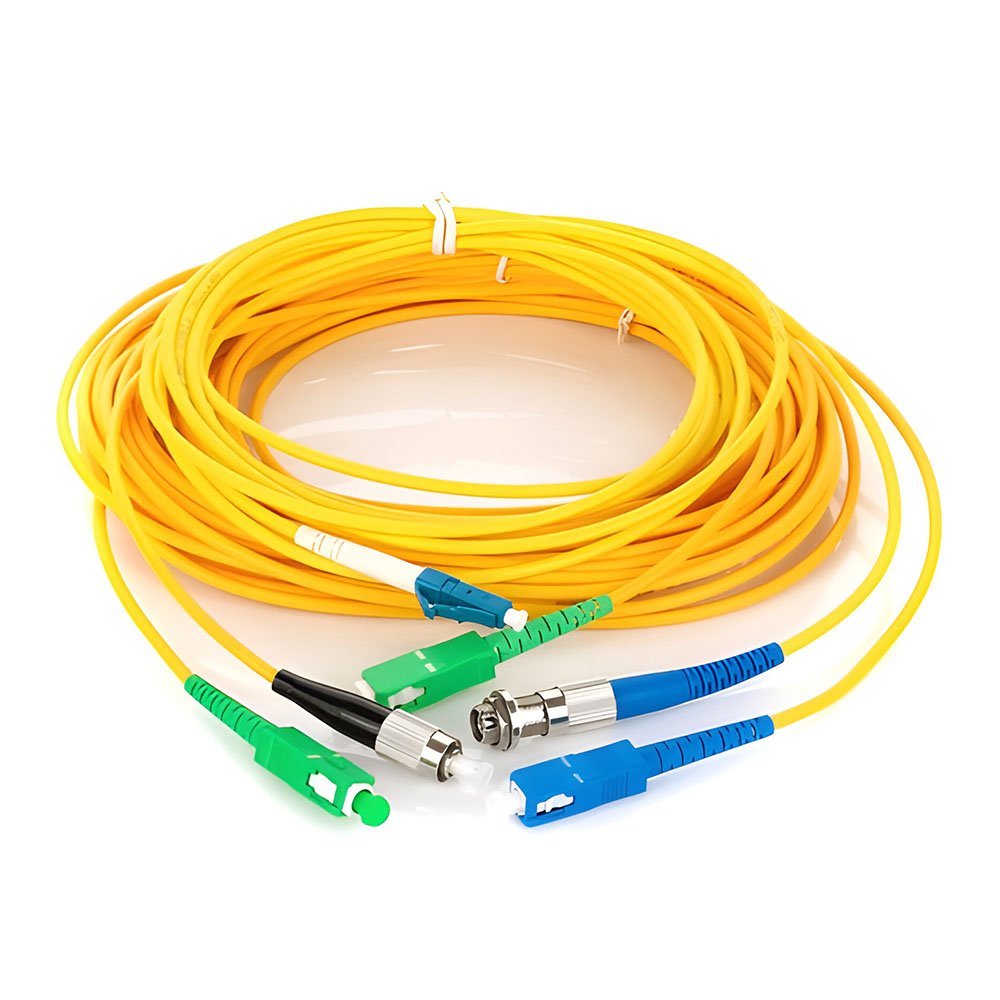
How Does It Work?
Each fiber patch cord has connectors on both ends—common types include LC connector, SC connector, or ST connector—that plug into the ports of your devices. Inside the cable, there’s a core—e.g., a 9-micron glass strand for single mode—surrounded by a cladding layer that keeps the light inside through a process called total internal reflection. This happens because the cladding has a lower refractive index—e.g., 1.46 compared to the core’s 1.48—causing the light to bounce back into the core at angles above 42°, even around gentle bends.
The Data Transmission Process
When you send data—like an email or a video stream—a laser or LED in the sending device converts it into light pulses—e.g., at 1310 nm wavelength. Those pulses travel through the fiber patch cord to the receiving device, where another component—like an optical transceiver—converts the light back into data—e.g., delivering 1 Gbps to your network. This light-based system is what makes fiber patch cord uses so efficient—e.g., a 3m cord can maintain 10 Gbps with just 0.3 dB loss—compared to copper’s 1 Gbps over 100m with 10 dB loss.
Why It’s Interference-Free
What makes fiber patch cords special is their use of light instead of electricity, which means they’re immune to electromagnetic interference—e.g., no signal disruption near power cables, unlike copper wires that might lose 10% of their signal in noisy environments. This reliability is why what is fiber patch cord is such an important question for anyone looking to build or maintain a high-speed network, whether it’s for a small home setup, a corporate office, or a large-scale enterprise system. From connecting your home router to linking servers in a data center, fiber patch cords ensure your data gets where it needs to go—fast and without hiccups.
Fiber Patch Cord Types: Exploring All Your Options
Let’s dive into the different fiber patch cord types—because there’s a wide variety to choose from, and picking the right one depends on your network’s needs. Based on the detailed breakdown from FS.com, fiber patch cord types can be categorized by fiber mode, transmission mode, jacket type, connector type, polishing type, and application.
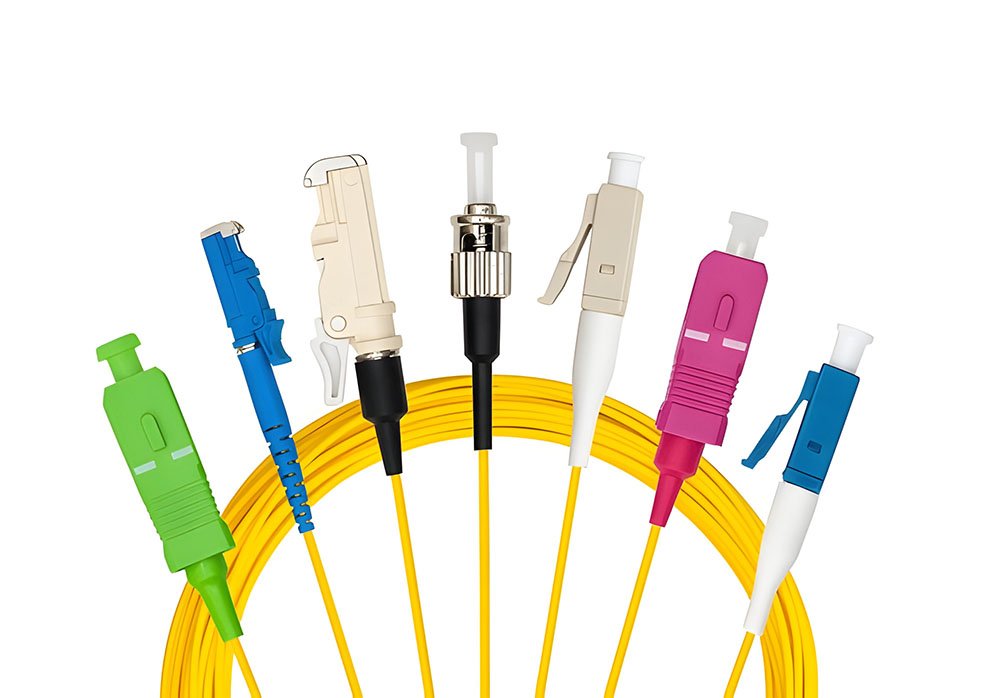
Fiber Mode: Single Mode vs. Multimode
Single Mode Fiber Patch Cords
These are designed for long-distance connections—e.g., up to 10 km or more—using a narrow 9-micron core that allows only one light path (or mode) to travel. They have very low signal loss—e.g., 0.2 dB/km—making them ideal for applications like telecom networks connecting buildings across a city—e.g., a 5 km link between two offices maintaining 1 Gbps with minimal degradation. Single mode cords often use yellow jackets for easy identification and are commonly paired with connectors like LC or SC.
Multimode Fiber Patch Cords
These are better for shorter distances—e.g., up to 500m—using a wider core, typically 50 or 62.5 microns, that allows multiple light paths (modes) to travel. They have higher signal loss—e.g., 3 dB/km—but are perfect for high-speed, short-range setups like data centers—e.g., a 300m link running 10 Gbps between servers. Multimode cords come in grades like OM1, OM2, OM3, OM4, and OM5—e.g., OM4 supports 40 Gbps over 150m—and often have aqua, orange, or lime green jackets (for OM5).
Transmission Mode: Simplex vs. Duplex
Simplex Fiber Patch Cords
These have just one fiber strand, meaning they’re designed for one-way data transmission—e.g., sending data from a router to a switch. They’re simple and cost-effective—e.g., a 1m SC-SC simplex cord might cost $5—and are often used in setups where two-way communication isn’t needed, like certain monitoring systems or broadcast applications.
Duplex Fiber Patch Cords
These have two fiber strands—one for sending and one for receiving—making them ideal for two-way communication. They’re the most common type in networks—e.g., a 3m LC-LC duplex cord for 1 Gbps between a switch and a server—and are often used in setups like office LANs or home FTTH connections. They’re slightly pricier—e.g., $10 for a 3m cord—but versatile for most applications.
Jacket Type: PVC, LSZH, OFNP, Armored
PVC (Polyvinyl Chloride) Patch Cords
These have a standard plastic jacket—e.g., a 3mm outer layer—offering decent flexibility and durability—e.g., for indoor use in offices. They’re affordable—e.g., $8 for a 2m cord—but not flame-resistant, so they’re best in low-risk areas—e.g., a home network.
LSZH (Low Smoke Zero Halogen) Patch Cords
These use a jacket that emits minimal smoke and no toxic halogens when burned—e.g., in a fire—making them safer for confined spaces—e.g., a 5m LSZH LC-LC cord in a hospital. They cost a bit more—e.g., $12 for 5m—but are ideal for public buildings—e.g., schools or offices.
OFNP (Optical Fiber Nonconductive Plenum) Patch Cords
These have a plenum-rated jacket—e.g., for air ducts—meeting strict fire safety codes—e.g., in commercial buildings. They’re pricier—e.g., $15 for a 5m cord—but necessary for plenum spaces—e.g., a 3m OFNP cord in a corporate ceiling.
Armored Fiber Patch Cords
These are built tough, with an extra layer—e.g., a steel sheath—to protect against damage like crushing or rodent bites. They’re great for harsh environments—e.g., a 5m armored LC-LC cord in a factory setting—where regular cords might get damaged. They cost more—e.g., $25 for a 5m cord—but offer durability—e.g., withstanding 2000N of pressure.
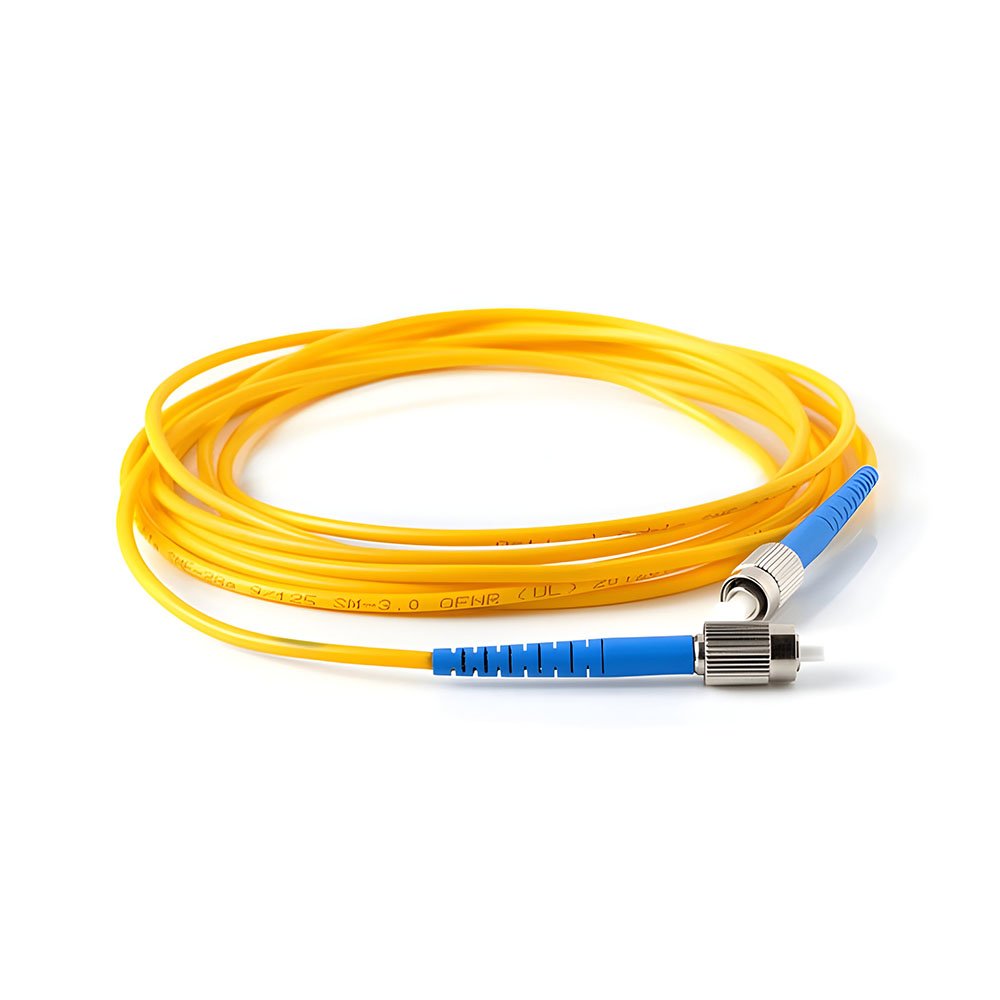
Connector Type: LC, SC, ST, FC, MTP/MPO
LC Connector Patch Cords
These have a small, latch-based connector—e.g., 1.25mm ferrule—making them compact—e.g., a 2m LC-LC cord for 10 Gbps in a data center. They’re common in high-density setups—e.g., server racks—due to their size—e.g., fitting 48 ports in a 1U panel.
SC Connector Patch Cords
These use a push-pull connector—e.g., 2.5mm ferrule—offering durability—e.g., a 3m SC-SC cord for telecom. They’re widely used in older setups—e.g., central offices—because they’re easy to install—e.g., a 0.2 dB insertion loss.
ST Connector Patch Cords
These have a bayonet-style connector—e.g., a 2m ST-ST cord for 1 Gbps in a campus network. They’re less common today but still used in legacy systems—e.g., universities—offering a secure connection—e.g., 0.3 dB loss.
FC Connector Patch Cords
These use a screw-on mechanism—e.g., a 5m FC-FC cord for test equipment—offering low signal loss—e.g., 0.1 dB—due to their tight fit. They’re often used in high-vibration environments—e.g., industrial settings.
MTP/MPO Connector Patch Cords
These are multi-fiber connectors—e.g., 12 or 24 fibers in one—used for high-speed links—e.g., a 1m MPO-MPO cord for 100 Gbps in a data center. They’re ideal for dense setups—e.g., 144 fibers in a 1U panel—but cost more—e.g., $50 for 1m.
Polishing Type: UPC vs. APC
UPC (Ultra Physical Contact) Patch Cords
These have a slightly curved connector end—e.g., a 3m LC-UPC cord—offering low return loss—e.g., -50 dB—suitable for most networks—e.g., a 1 Gbps office LAN. They’re standard and affordable—e.g., $10 for 3m.
APC (Angled Physical Contact) Patch Cords
These have an 8-degree angled end—e.g., a 5m SC-APC cord—reducing reflections even more—e.g., -60 dB return loss—ideal for telecom—e.g., a 10 km FTTH link. They cost a bit more—e.g., $12 for 5m—but ensure better signal quality.
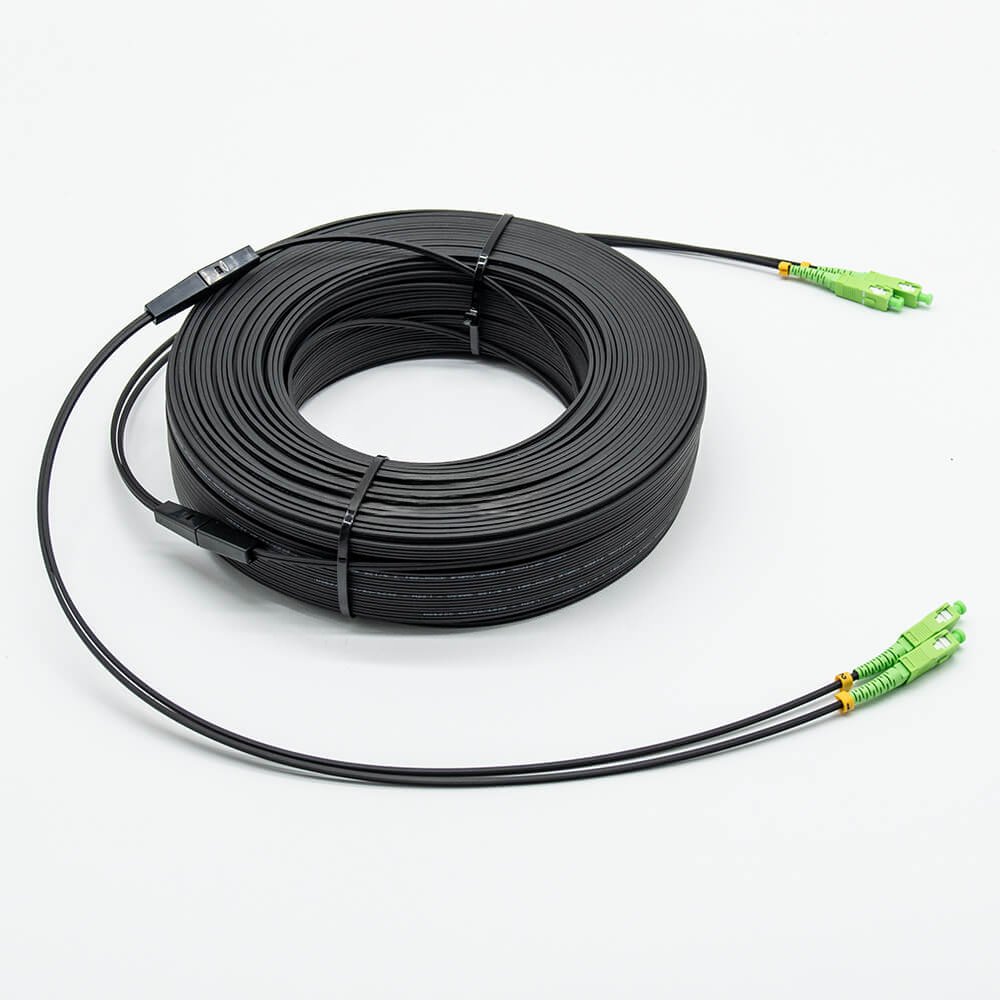
Application: Standard, Bend Insensitive, Pigtail
Standard Fiber Patch Cords
These are the most common—e.g., a 2m LC-LC duplex for 1 Gbps in an office—offering a bend radius of 30mm—e.g., 0.3 dB loss over 2m. They’re versatile—e.g., $8 for 2m—for general use.
Bend Insensitive Fiber Patch Cords
These handle tighter bends—e.g., 7.5mm radius—without signal loss—e.g., a 3m bend-insensitive LC-LC cord for 10 Gbps in a tight rack—losing just 0.1 dB. They’re great for cramped spaces—e.g., $15 for 3m.
Pigtail Fiber Patch Cords
These have a connector on one end and bare fiber on the other—e.g., a 2m LC pigtail for splicing—used to join a fiber optic cable splice—e.g., in a telecom cabinet. They’re affordable—e.g., $8—and essential for long fiber runs—e.g., 10 km backbones.
These fiber patch cord types offer a wide range of options—whether you need a single mode cord for a long-distance telecom link, a multimode MPO for a data center, or an armored LSZH cord for a hospital, understanding what is fiber patch cord helps you choose the right one—CommMesh has them all.
What Can Fiber Patch Cords Be Used For?
Let’s explore what can fiber patch cords be used for—because the fiber patch cord uses are incredibly diverse, making them a go-to solution in all kinds of settings. At their core, fiber patch cords are about connecting devices to ensure fast, reliable data transfer, but their applications span across industries and environments.
Home Networks: FTTH Connections
In a home setting, fiber patch cord uses are often tied to FTTH (Fiber to the Home) setups. A 1m LC-LC duplex cord might connect your ISP’s ONT (Optical Network Terminal) to your router, delivering 1 Gbps for seamless Wi-Fi—e.g., streaming 4K movies on multiple devices without buffering. This ensures the high-speed fiber optic connection from your ISP makes it to your devices—e.g., maintaining 99.99% uptime even during heavy use.
Office Environments: Building LANs
In office environments, fiber patch cords are essential for building local area networks (LANs). A 3m duplex SC-SC cord might link two switches on different floors—e.g., providing 10 Gbps to support 50 employees working on cloud apps, video calls, and file transfers. This setup ensures data moves quickly—e.g., transferring a 1 GB file in under 1 second—without interference—e.g., a 10% signal drop near electrical equipment.
Data Centers: High-Speed Server Links
Data centers are a major area for fiber patch cord uses. A 5m multimode OM4 LC-LC cord might connect servers to storage units, handling 40 Gbps to manage massive data loads—e.g., 100 TB of daily traffic for a cloud provider. For even higher speeds, a 1m MPO-MPO cord—e.g., $50—might link switches for 100 Gbps, supporting thousands of users—e.g., a streaming service with 1 million daily viewers.

Telecom Networks: Connecting Backbones
Telecom networks rely heavily on fiber patch cords. In a central office, a 10m single mode SC-APC cord might connect equipment to a 100 km fiber backbone—e.g., delivering 1 Gbps to a neighborhood. These cords are often used with fiber optic cable splices—e.g., a pigtail cord joining a patch panel—ensuring long-distance signals stay strong—e.g., 0.4 dB loss over 10 km.
Specialized Fields: Healthcare and Industry
In healthcare, fiber patch cords are used in settings like MRI machines—e.g., a 2m simplex LC-LC cord ensuring clear data transfer for imaging—e.g., zero interference from magnetic fields. In industrial settings, an armored 5m cord might connect sensors—e.g., 1 Gbps for real-time monitoring—where durability is key—e.g., resisting 2000N of pressure.
Education: Campus Connectivity
In education, a 3m bend-insensitive cord—e.g., $15—might connect campus buildings—e.g., 10 Gbps over 300m—fitting into tight spaces without signal loss—e.g., 0.1 dB. From homes to hospitals, what is fiber patch cord shows they’re a vital link in any high-speed, reliable network.
How Much Does a Fiber Patch Cord Cost?
Let’s talk about the fiber patch cord price—because understanding costs is a big part of what is fiber patch cord. The price of a fiber patch cord depends on several factors, including its type, length, connector, jacket, and quality.
Basic Cords: Simplex and Duplex
A basic 1m simplex LC-LC multimode cord—e.g., for a small office—might cost $5, offering low signal loss—e.g., 0.3 dB over 1m. A 3m duplex single mode SC-SC cord—e.g., for a telecom cabinet—might cost $15, reflecting the quality needed for longer distances—e.g., 0.2 dB/km loss.
Specialized Cords: Armored and MPO
An armored fiber patch cord—e.g., a 5m LC-LC cord—might cost $25 due to its protective layer—e.g., a steel sheath resisting 2000N of pressure—perfect for factories. A 1m MPO-MPO multimode cord for 100 Gbps in a data center might run $50, due to its multi-fiber design—e.g., 12 fibers in one connector.
Safety-Rated Cords: LSZH and OFNP
A 5m LSZH single mode cord—e.g., for a hospital—might cost $12, reflecting its safety features—e.g., low smoke in a fire. An OFNP cord for plenum spaces—e.g., a 3m LC-LC—could be $15 to meet fire codes—e.g., in a commercial ceiling.
Pigtails and Quality Variations
Pigtail cords—e.g., a 2m LC pigtail for splicing—cost around $8, ideal for fiber optic cable splices—e.g., in a telecom panel. A high-quality cord with low insertion loss—e.g., 0.2 dB—might cost $20 for a 3m duplex LC-LC, compared to a $10 cord with 0.5 dB loss—e.g., ensuring 1 Gbps stays steady over 10m.
Bulk Pricing and Connector Impact
Polishing type matters—an APC connector—e.g., a 5m SC-APC cord—might add $2 over a UPC—e.g., $12 vs. $10—due to better signal quality—e.g., -60 dB return loss. Bulk buys drop prices—e.g., $3 each for 100 1m multimode cords—saving $200. The fiber patch cord price range—$5 to $50—makes them accessible for most fiber patch cord uses.
Why Choose Fiber Patch Cords Over Copper Cables?
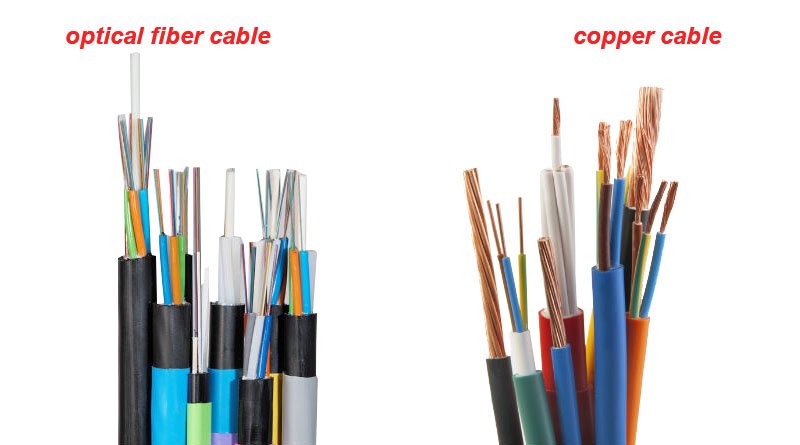
Another way to understand what is fiber patch cord is to see why they’re often better than copper cables. Fiber patch cord uses offer several advantages that make them stand out.
Speed Advantage
Fiber patch cords use light, which is faster than copper’s electrical signals—e.g., 10 Gbps over 500m with a 3 dB loss for multimode, vs. copper’s 1 Gbps over 100m with a 10 dB loss. A 10 GB file takes 8 seconds with a 10 Gbps fiber cord, but 80 seconds with a 1 Gbps copper cable.
Distance Capability
Fiber patch cords go farther—e.g., a single mode cord maintains 1 Gbps over 10 km with 0.2 dB/km loss—while copper fades—e.g., 100 Mbps at 1 km due to 10 dB/km loss. A 5m single mode cord can link buildings 5 km apart—e.g., 1 Gbps—while copper needs repeaters—e.g., $1500 for 3 units.
Reliability in Harsh Conditions
Fiber patch cords are immune to interference—e.g., no signal drop near a 50 kV power line—unlike copper—e.g., 20% loss near machinery. They’re weather-resistant—e.g., no outages in rain—while copper corrodes—e.g., 10% signal loss after a year outdoors.
Safety and Weight Benefits
Fiber patch cords don’t conduct electricity—e.g., no shock risk—unlike copper—e.g., 48V in Ethernet cables—so they’re safer in hazardous areas—e.g., chemical plants. They’re lighter—e.g., a 3m cord weighs 30g vs. 100g for copper—making them easier to install—e.g., in tight server racks.
How to Choose the Right Fiber Patch Cord for Your Needs?
Picking the right fiber patch cord is a key part of understanding what is fiber patch cord—so how do you choose the best one?
Match the Distance
For long distances—e.g., 5 km between offices—a single mode fiber patch cord is best—e.g., a 5m single mode LC-LC cord with 0.2 dB/km loss—ensuring 1 Gbps. For short distances—e.g., 300m in a data center—a multimode cord works—e.g., a 3m OM4 LC-LC cord for 10 Gbps with 3 dB/km loss—e.g., $10 vs. $15 for single mode.
Check Connector Compatibility
Fiber patch cord types come with different ends—e.g., LC, SC, ST, FC, or MPO. If your switch has LC ports and your server has SC ports, you’ll need a 2m LC-SC cord—e.g., $12. For high density, an MPO-MPO cord—e.g., $50 for 1m—might be best—e.g., for 100 Gbps over 12 fibers.
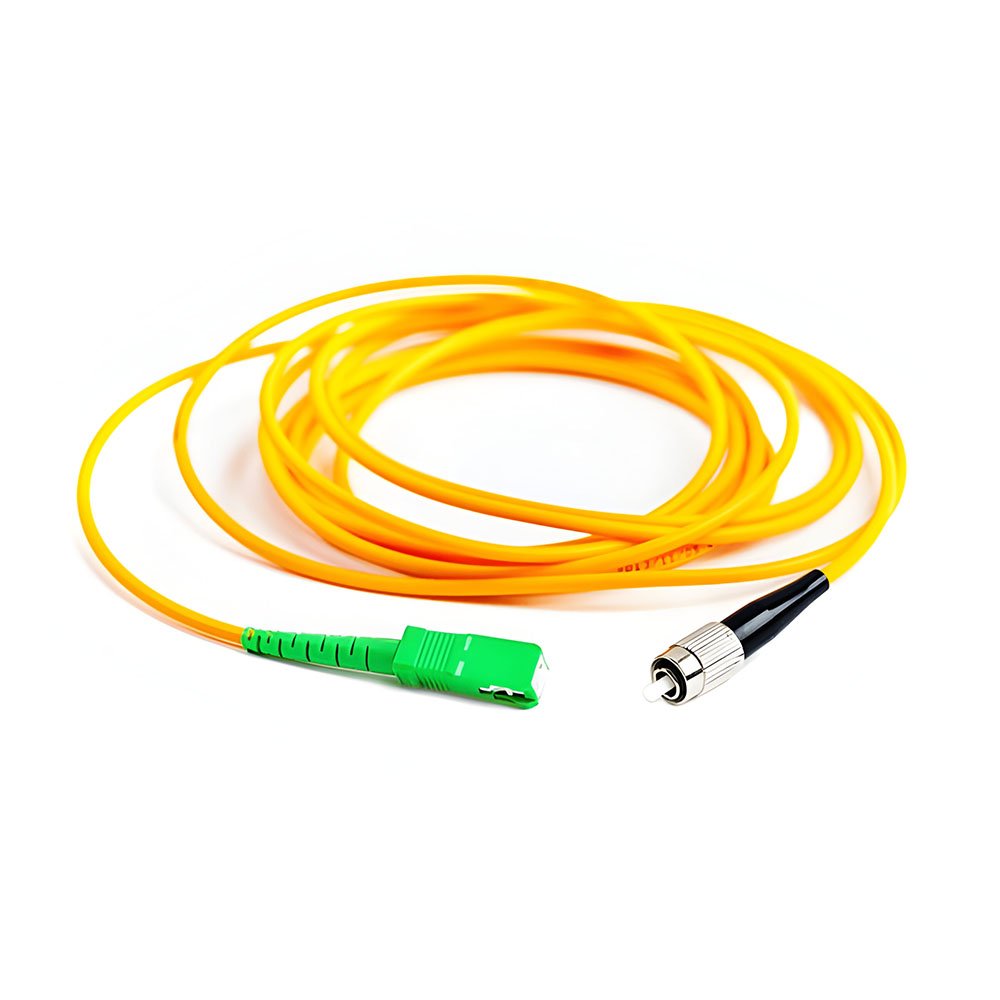
Consider Speed Requirements
For high-speed needs—e.g., 40 Gbps in a data center—go for an OM4 multimode cord—e.g., a 5m LC-LC supporting 150m at 40 Gbps. For simpler setups—e.g., 1 Gbps in a home—OM1 or OM3 multimode works—e.g., a 1m cord for $5—matching your router’s capacity.
Account for Environment
In tough settings—e.g., a factory—an armored fiber patch cord is smart—e.g., a 5m armored LC-LC for $25—resisting 2000N of pressure. In public spaces—e.g., a school—an LSZH cord—e.g., $12 for 5m—ensures safety. For tight spaces—e.g., a server rack—a bend-insensitive cord—e.g., $15 for 3m—handles 7.5mm bends—e.g., 0.1 dB loss.
Balance Cost and Quality
Consider the fiber patch cord price—e.g., $5-50—and balance cost with quality—e.g., a low-loss cord (0.2 dB) for $20 ensures better performance over 10m than a $10 cord (0.5 dB). A small office might pick a 3m duplex UPC LC-LC for $10, while a data center might choose a 1m MPO-MPO for $50.
Conclusion: Why Fiber Patch Cords Are Essential for Connectivity
What is fiber patch cord? It’s the small but powerful cable that keeps your network connected—carrying data at light speed, like a lifeline for your digital world. We’ve explored fiber patch cord types—from single mode to armored—and fiber patch cord uses—from homes to data centers—along with their costs, benefits, and how to choose them. The fiber patch cord price—starting at $5 with CommMesh—makes them an affordable way to boost your network’s speed and reliability—e.g., 10 Gbps with 99.99% uptime. Whether you’re setting up a small office or a large-scale system, fiber patch cords are the key to staying connected—grab one and see the difference for yourself!

